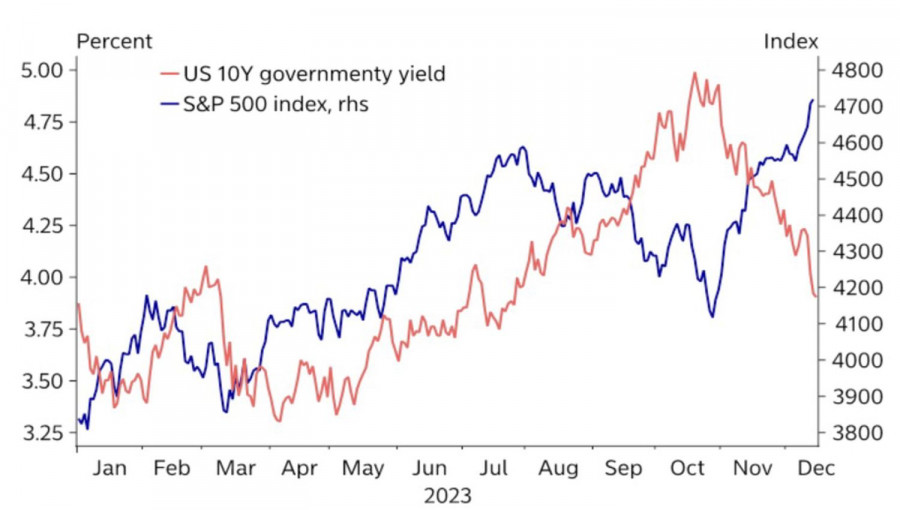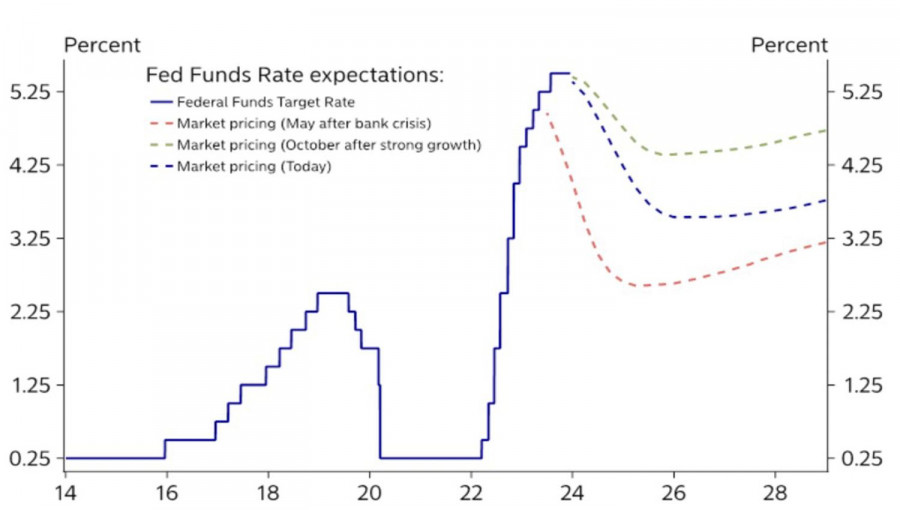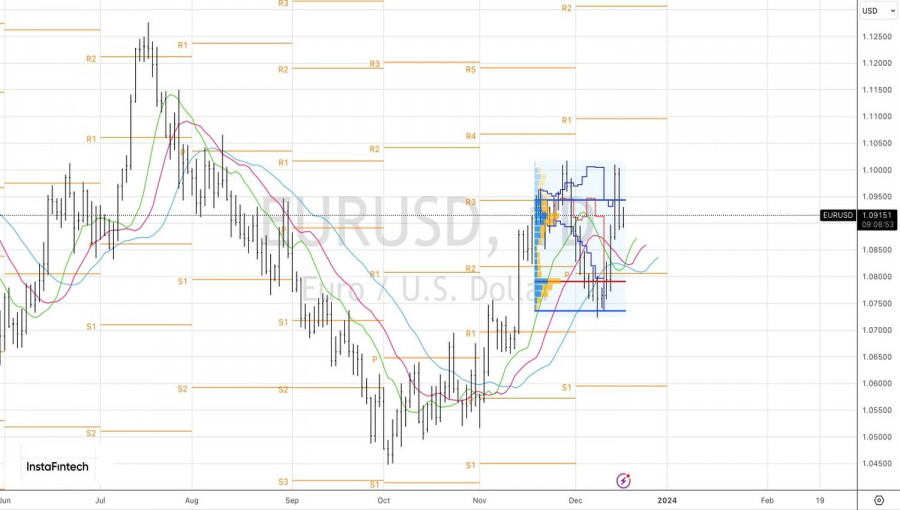
Better to regret what you did than what you didn't. However, it seems that Jerome Powell and his team took a gamble. By stating that the Federal Reserve is discussing the easing of monetary policy and indicating a 75 basis points reduction in the federal funds rate in 2024 in the FOMC forecasts, the central bank signed its own death warrant. Even the financial markets did not expect such a surprise; they have been trying to recover for days. EUR/USD is turbulent, and it seems to be for the long term.
Wanted it to be better, but it turned out as usual. The Fed expressed a desire to have the best of both worlds: bring inflation to the 2% target and avoid plunging the economy into a recession. However, this contradicts the theory, which states that high inflation occurs in times of economic overheating. This can lead to a relaxation of financial conditions.
Indeed, since the end of October, the yield on 10-year Treasury bonds has fallen by 90 basis points, the stock market has grown by 10%, credit spreads have narrowed, and the U.S. dollar has lost its previously gained positions against major world currencies. As a result, Goldman Sachs' financial conditions index has decreased by approximately 100 basis points. The company does not expect a hard or soft landing but anticipates further growth in the U.S. economy. If this happens, inflation will have nothing else to do but reach a new peak.
Dynamics of S&P 500 and U.S. Bond Yields

The situation is exacerbated by a 20% drop in oil prices, which will undoubtedly provide additional stimulus for consumers and contribute to further acceleration of U.S. GDP.
It is also worth remembering that at the end of each of the three previous years, the market was wrong. At the end of 2022, investors were betting on a recession in the U.S. economy. At the end of 2021, they believed that shares of technology companies would be immune to an increase in the federal funds rate. Finally, in December 2020, they were ready to bet that high prices for popular stocks would make them rich. In the end, everything happened exactly the opposite.
Now most investors are convinced of a soft landing and predict a 150 basis points reduction in the federal funds rate in 2024. Going against the crowd is an extremely unpleasant occupation, but what if it's wrong this time too?
Dynamics of Market Forecasts for the Fed Rate


Personally, I don't quite understand why, in the conditions of such a strong economy, the Fed decided to surprise the markets with a forecast of a 75 basis points reduction in the federal funds rate to 4.75% in 2024. Is the history of the 1970s, when the premature victory of the central bank over inflation led to the resumption of the cycle of monetary restriction and a double recession, thrown into the trash? I believe this adventure could cost the Federal Reserve dearly.
Technically, on the daily chart of EUR/USD, the bulls are trying to return quotes to the upper boundary of the fair value range of 1.074-1.094. A rebound from it is a reason to form short positions. On the contrary, a confident breakout with a close above it will be the basis for buying the euro against the U.S. dollar.